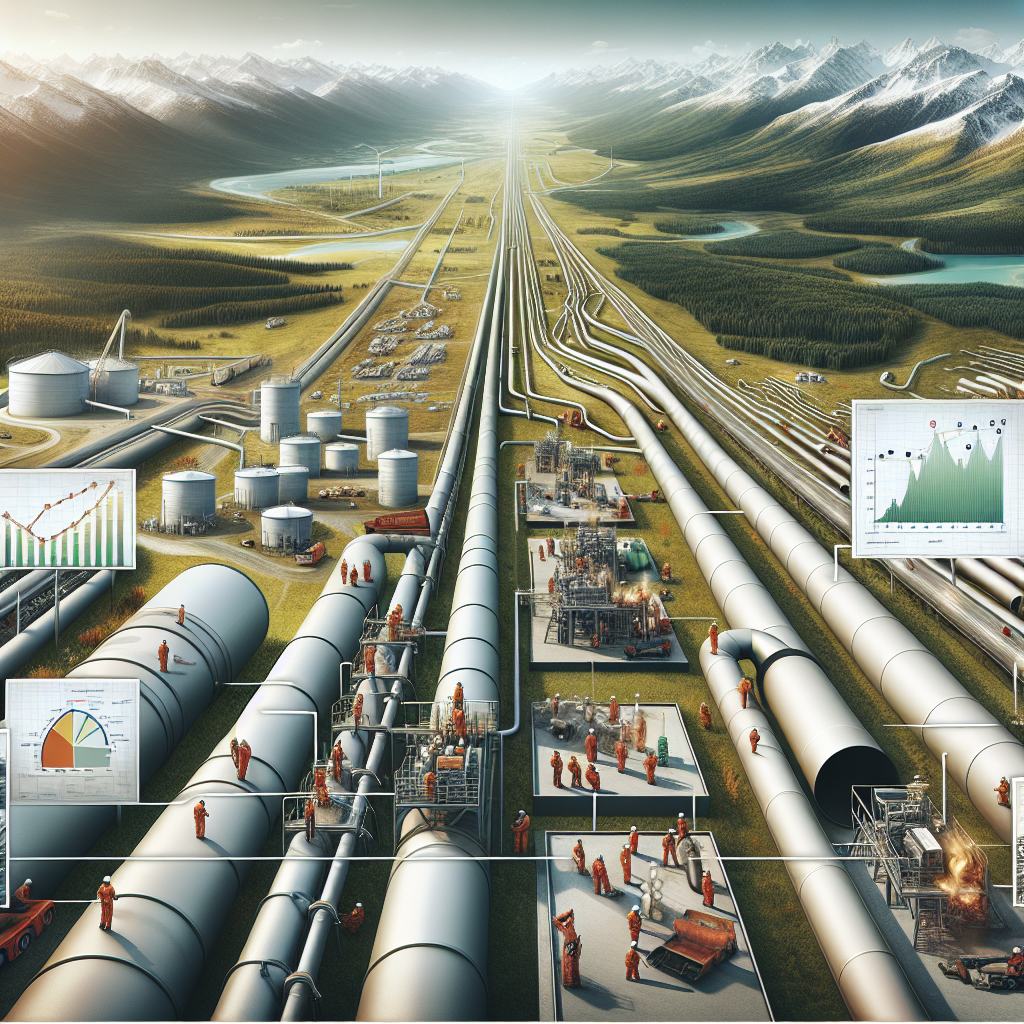
Start thinking more like an analyst.
Learn data science, natural language processing, and big data analysis essentials at your own pace.
The Ozone Layer – Understanding its Importance, Threats, and the Urgency of Preservation
The ozone layer, a protective shield situated between 15 km and 30 km above the earth, plays a crucial role in absorbing the sun’s harmful ultraviolet radiation. The health of this atmospheric layer is integral to both human health and environmental sustainability, making its preservation a matter of global importance. The ozone layer acts as a safeguard, preventing the most dangerous UV rays from reaching the Earth’s surface, where they can cause significant harm to living organisms. Without this protective layer, the planet would be exposed to much higher levels of UV radiation, leading to severe consequences for all forms of life.
Ozone Depletion – Causes and Effects
Ozone depletion is primarily caused by human-made chemicals known as ozone-depleting substances (ODS). These chemicals include chlorofluorocarbons (CFCs), halons, and other related chemicals. When these substances are released into the atmosphere, they eventually reach the stratosphere, where they are broken down by ultraviolet radiation, releasing chlorine and bromine atoms. These atoms then react with ozone molecules, causing the depletion of the ozone layer. The effects of ozone depletion are severe, leading to increased UV radiation reaching the Earth’s surface, which can cause skin cancer, cataracts, and other health issues, as well as negatively impacting ecosystems and wildlife. The breakdown of these substances in the stratosphere is a complex chemical process that results in the destruction of ozone molecules, significantly thinning the ozone layer. This thinning reduces the layer’s ability to absorb UV radiation, leading to a cascade of negative effects on both human health and the environment.
Over the past few decades, the ozone layer has been under significant threat due to human activity. Since 1986, however, a considerable decrease in the use of ozone-depleting substances worldwide has been recorded. This reduction was primarily a result of the 1987 United Nations Environment Program (UNEP) Montreal Protocol, an international treaty specifically designed to protect the ozone layer by phasing out the production of numerous substances that are responsible for ozone depletion. The Montreal Protocol is widely regarded as one of the most successful environmental agreements in history, as it has led to significant reductions in the emissions of ODS. Its implementation has demonstrated the power of international cooperation in addressing global environmental issues.
Despite these efforts, the ozone layer has experienced severe damage. In September 2000, the largest ozone hole in recorded history occurred, covering an area of 28.4 million square kilometers, which is almost seven times the size of the European Union. This unprecedented event served as a stark reminder of the fragility of our planet’s defensive shield and the urgency of environmental protection. The occurrence of such a large ozone hole highlighted the ongoing challenges in protecting the ozone layer and underscored the need for continued vigilance and action to prevent further damage.
Consequences of Ozone Depletion
The consequences of ozone depletion are far-reaching and multifaceted. Increased levels of UV-B radiation due to ozone layer thinning can lead to higher incidences of skin cancers and cataracts in humans. It can also suppress the immune system, reducing the ability to fight off certain infectious diseases. In the environment, increased UV radiation can harm marine ecosystems, particularly affecting phytoplankton, which forms the base of aquatic food webs. Terrestrial plant life can also be adversely affected, impacting agricultural productivity and forest health. The increase in UV-B radiation can cause direct damage to the DNA of living organisms, leading to mutations and other genetic damage. This can have profound effects on the health and survival of species, as well as on the overall balance of ecosystems.
The depletion of stratospheric ozone occurs in both hemispheres. However, it is more severe in the Southern Hemisphere due to colder stratospheric temperatures. These colder temperatures encourage the creation of polar stratospheric clouds, which worsen ozone depletion. The formation of these clouds provides a surface for chemical reactions that release chlorine and bromine atoms, which then go on to destroy ozone molecules. This phenomenon is particularly pronounced in the Antarctic region, where the largest and most persistent ozone holes have been observed.
The concentration of ozone is measured in Dobson Units (DU), with the average global total ozone concentration typically hovering around 300 DU. An area is characterized as an “ozone hole” when the ozone column values drop to 220 DU or less. This lower concentration of ozone, defining the ozone hole, is most commonly observed in the southern hemisphere. The measurement of ozone concentration in Dobson Units provides a standardized way to monitor changes in the ozone layer over time and to assess the effectiveness of measures taken to protect it.
International Efforts to Protect the Ozone Layer
International efforts to protect the ozone layer have been significant and ongoing. The most notable of these efforts is the Montreal Protocol, which has been successful in reducing the production and consumption of ozone-depleting substances. The protocol has undergone several amendments and adjustments to include more substances and to accelerate the phase-out schedules. Additionally, the Vienna Convention for the Protection of the Ozone Layer, adopted in 1985, provided the framework for international cooperation in research, monitoring, and information exchange related to ozone depletion. The success of these international agreements demonstrates the importance of global collaboration in addressing environmental issues that transcend national borders. By working together, countries can achieve significant progress in protecting the ozone layer and safeguarding the health of the planet.
Strategies for Ozone Layer Protection
Several strategies can be employed to protect the ozone layer. These include the continued enforcement and strengthening of international agreements like the Montreal Protocol. Additionally, promoting the use of ozone-friendly technologies and substances, raising public awareness about the importance of the ozone layer, and encouraging individual actions to reduce the use of products containing ozone-depleting substances are crucial. Research and development of alternatives to ODS and improving the efficiency of existing technologies can also play a significant role in protecting the ozone layer. Public education campaigns can help individuals understand the impact of their choices on the ozone layer and encourage them to adopt more sustainable practices. Governments and industries can also play a key role by investing in the development and deployment of alternative technologies that do not harm the ozone layer.
The Future of Ozone Layer Protection
The future of ozone layer protection depends on sustained global efforts and cooperation. While significant progress has been made, challenges remain, including the illegal trade of ozone-depleting substances and the need for continued vigilance and enforcement of existing regulations. Advances in science and technology will be essential in developing new methods to monitor and protect the ozone layer. Public education and engagement will also be critical in ensuring that individuals and communities understand their role in protecting this vital component of our atmosphere. The continued success of international agreements like the Montreal Protocol will depend on the commitment of all countries to uphold their obligations and to take proactive measures to prevent further damage to the ozone layer. By working together, we can ensure that the ozone layer is preserved for future generations, safeguarding the health and well-being of the planet and all its inhabitants.
The state of the ozone layer is a matter of global concern that requires immediate attention and concerted efforts. The consequences of its depletion are far-reaching, affecting not just human health, but the sustainability of the entire planet. Therefore, it is essential for international cooperation and individual responsibility to work hand in hand to mitigate this issue and protect our earth.
Science4Data is committed to cut through greenwashing and measure real impact. Join the journey to a sustainable future. Your actions matter.
Hawaii’s Proposed $25 Green Fee – A Necessary Step for Environmental Preservation or a Threat to Tourism?
Hawaii is set to introduce a ‘green fee’ of $25 per visit on tourists from 2025 as an effort to address the environmental damage caused by excessive tourism. The proposed tax is expected to generate around $68 million annually for climate initiatives and to counteract the adverse effects caused by nearly 10 million tourists who visit the island each year.
Supporters of the new fee, including Governor Josh Green, argue that it is a necessary measure to protect Hawaii’s natural resources and to counteract over-tourism. On the other hand, critics from the tourism industry suggest that the additional fee could deter potential visitors, thereby impacting the state’s tourism-dependent economy.
Interestingly, Hawaii’s proposal mirrors a global trend of using visitor fees to mitigate the negative impacts of tourism. Several other countries are also considering implementing similar measures in an attempt to preserve their natural landscapes and resources.
Despite already having one of the highest occupancy tax rates in the U.S., Hawaii is keen on using the green fee as a means to boost environmental preservation efforts. Dawn Chang, Chair of the Hawaii Department of Land and Natural Resources, is optimistic about the implementation of the green fee in 2025, which has been declared as ‘The Year of Climate Action’.
The proposal, however, has not been without criticism. There are concerns that the added fee could deter tourism, a crucial aspect of Hawaii’s economy. The state’s economy has already been impacted by natural disasters along with high rental fees for accommodations. Despite these concerns, advocates for the green fee argue that the long-term benefits of preserving Hawaii’s natural beauty and mitigating climate change impacts outweigh potential short-term economic losses. The implementation of the green fee will be a step towards ensuring that Hawaii’s stunning landscapes and unique ecosystem can be enjoyed by generations to come.
Science4Data is committed to cut through greenwashing and measure real impact. Join the journey to a sustainable future. Your actions matter.
The Future of Video Editing: Adobe Firefly Video Model
Adobe Firefly has been a leader in the field of imaging, design, and vectors since its inception in March 2023. It has been instrumental in powering various features across Creative Cloud and Express, pushing the boundaries of creativity for users.
One of the most anticipated developments from Adobe is the Firefly Video Model, which is poised to transform professional workflows in video editing tools like Premiere Pro. A beta version of this revolutionary tool is expected to be released later this year.
The Firefly Video Model is designed with a focus on creators’ rights, ensuring that it is only trained on content that has proper permission for use. This emphasis on commercial safety sets it apart from other AI models in the market.
Editors will benefit from the Firefly Text-to-Video feature, which allows them to easily generate B-Roll using text prompts and camera controls to seamlessly fill gaps in their timeline. This streamlines the editing process, making it more efficient for creators to produce high-quality content.
The versatility of the Firefly Video Model is evident in its ability to cater to a wide range of use cases. Editors can quickly create atmospheric elements and animations, enhancing the overall quality of their content.
Adobe’s AI model for video generation, Firefly Video, is set to be available on the Premiere Pro beta app and a free website by the end of 2024. This accessibility will enable more users to take advantage of the innovative features offered by Firefly Video.
Key features such as Generative Extend, Text to Video, and Image to Video, currently in private beta, are expected to be released to the public in the near future. These features will further enhance the capabilities of Firefly Video, providing users with even more tools to create captivating content.
While Adobe’s generative AI tools have the potential to disrupt the industry, the company is committed to providing controllability and implementing safeguards to restrict certain types of content. This ensures that users can leverage the power of Firefly Video while maintaining control over their creative output.
Connect with our expert to explore the capabilities of our latest addition, AI4Mind Chatbot. It’s transforming the social media landscape, creating fresh possibilities for businesses to engage in real-time, meaningful conversations with their audience.
US Weighs Lifting Ban on Nvidia Chip Exports to Saudi Arabia
In a significant development that could boost Saudi Arabia’s AI capabilities, the US government is reportedly considering allowing Nvidia to export advanced chips to the Middle Eastern nation. This proposal was a major focus of discussion at the recent Global AI Summit (GAIN) in Saudi Arabia. The summit saw representatives from AI hardware firm Groq, Google, Qualcomm, and Saudi government officials convene.
Previously, the US had imposed restrictions on the shipment of Nvidia’s advanced graphics cards to Saudi Arabia. This was primarily due to concerns over the nation’s close ties with China and the potential for leakage of AI secrets. However, this could change if the Saudi Data and AI Authority successfully meets US security demands, thus expediting the acquisition of these advanced chips.
Saudi Arabia has been making concerted efforts to limit its involvement with Chinese companies, despite its relations with the Asian superpower. This shift in stance could be aimed at securing access to superior US chips, which are considered to be at the forefront of AI technology.
If the ban is lifted, it would pave the way for Nvidia’s advanced chips, including the H200s, to be exported to Saudi Arabia. This move could have a significant impact on the nation’s AI landscape, strengthening its capabilities and technological competitiveness.
Connect with our expert to explore the capabilities of our latest addition, AI4Mind Chatbot. It’s transforming the social media landscape, creating fresh possibilities for businesses to engage in real-time, meaningful conversations with their audience.
Recycling Bots
Introduction
Recycling bots represent a significant advancement in waste management technology. These automated systems are designed to sort and process recyclable materials more efficiently than traditional methods. As the world grapples with environmental challenges, recycling bots offer a scalable, adaptable, and effective solution to improve recycling rates and reduce landfill waste. By leveraging advanced technologies such as artificial intelligence and machine learning, recycling bots can quickly identify, categorize, and sort various types of waste, making the recycling process faster and more accurate.
Localized Solutions
Localized solutions are essential for the successful implementation of recycling bots. These systems can be customized to address specific local recycling needs and regulations. For instance, a recycling bot in a city with a high volume of plastic waste can be programmed to identify and sort various types of plastics. This customization makes recycling bots highly adaptable and efficient, ensuring that they meet the unique requirements of different regions.
Moreover, localized recycling bots can be designed to handle specific challenges faced by a community. For example, in areas where electronic waste is a significant concern, bots can be equipped with specialized sensors to identify and sort electronic components. This targeted approach not only improves the efficiency of recycling but also ensures that valuable materials are recovered and reused.
Global Networks
Recycling bots are not just local solutions; they are part of a global network aimed at optimizing recycling practices. These bots share data and insights with each other, creating a comprehensive database that can be used to improve material recovery rates worldwide. By being interconnected, recycling bots can learn from each other and continuously enhance their sorting algorithms, making the entire recycling process more efficient on a global scale.
Global networks also facilitate the standardization of recycling practices. By sharing best practices and data, recycling facilities worldwide can adopt more efficient and effective methods. This global collaboration can lead to significant improvements in recycling rates and a reduction in the environmental impact of waste. Additionally, global networks enable real-time monitoring and analysis, allowing for quick adjustments and improvements in recycling processes.
Benefits of Recycling Bots
The benefits of recycling bots are manifold. They significantly reduce the amount of waste that ends up in landfills, thus mitigating environmental pollution. Recycling bots are also more efficient and accurate than human workers, reducing the margin of error in sorting recyclable materials. Additionally, these bots can work around the clock, increasing the overall throughput of recycling facilities.
Recycling bots also contribute to economic benefits. By improving the efficiency of recycling processes, facilities can save on labor costs and increase the value of recovered materials. The precision of recycling bots ensures that high-quality materials are sorted and processed, which can be sold at a higher price in the market. Furthermore, by reducing the volume of waste sent to landfills, recycling bots help communities save on landfill costs and reduce the need for new landfill sites.
Challenges and Future Directions
Despite their numerous benefits, recycling bots face several challenges. One of the primary challenges is the high initial cost of implementation. Purchasing and installing recycling bots require significant investment, which may be a barrier for smaller recycling facilities. Additionally, recycling bots need regular maintenance and updates to stay effective, which adds to the operational costs.
Another challenge is the complexity of waste streams. Not all waste can be easily categorized and sorted by bots. For instance, mixed materials or items with food contamination pose significant sorting challenges. Future directions for recycling bots include making them more cost-effective and improving their ability to sort a wider range of materials. Research is also ongoing to make these bots more energy-efficient, further reducing their environmental impact.
Moreover, advancements in sensor technology and artificial intelligence will play a crucial role in overcoming these challenges. Developing more sophisticated sensors that can identify a broader range of materials and improving machine learning algorithms will enhance the capabilities of recycling bots. Collaborative efforts between researchers, industry stakeholders, and policymakers will be essential in driving these innovations forward.
Recycling bots are a promising technology that can revolutionize waste management. With localized solutions and global networks, these bots offer a scalable and effective way to improve recycling rates and reduce landfill waste. While there are challenges to overcome, the future of recycling bots looks bright, with ongoing research aimed at making them more efficient and cost-effective. As technology continues to advance, recycling bots will play an increasingly vital role in creating a more sustainable and environmentally friendly world.
Connect with our expert to explore the capabilities of our latest addition, AI4Mind Chatbot. It’s transforming the social media landscape, creating fresh possibilities for businesses to engage in real-time, meaningful conversations with their audience.
Insights into South Dakota’s Pipeline Project and its Impact on Biofuel Industry Sustainability
A significant environmental development is underway in South Dakota, where an $8 billion carbon pipeline is being planned. The significant project aims to capture CO2 emissions from ethanol fermentation, a key part of the biofuel production process. If successful, the project could capture up to 18 million metric tons of CO2 annually, marking a major milestone in the quest to mitigate the impacts of climate change.
However, the ambitious project also has its limitations. One notable shortfall is that the pipeline will not address the 7 million tons of emissions produced by machinery powered by fossil fuels. The mixed composition of emissions from gas-powered equipment makes capturing CO2 more difficult and costly. This highlights the complexity of the challenges faced in the mission to transition to a more sustainable and less carbon-intensive future.
Despite these challenges, some experts believe the integration of carbon capture into broader sustainability efforts could lead to significant advancements in the biofuel industry. A report suggests that by combining carbon capture with other sustainability initiatives, ethanol production could become net-negative in emissions by 2040.
Daniel Sanchez, assistant professor at the University of California-Berkeley, provided some perspective on the project. While acknowledging its significance, he also cautioned that it is but a drop in the bucket. Sanchez emphasized that the pipeline’s environmental impact is limited as it only captures fermentation emissions, underlining the need for broader efforts to combat climate change.
One of the measures that need to be taken includes reducing natural gas use at ethanol plants. This step could significantly cut greenhouse gases and further contribute to the decarbonization of the industry.
While the South Dakota carbon pipeline represents a significant step forward in carbon capture, it’s clear that a more holistic approach is needed to meaningfully reduce emissions. The integration of carbon capture into broader sustainability efforts, including reducing natural gas use, could play a significant role in achieving a net-negative emissions future for the ethanol production industry.
Science4Data is committed to cut through greenwashing and measure real impact. Join the journey to a sustainable future. Your actions matter.








